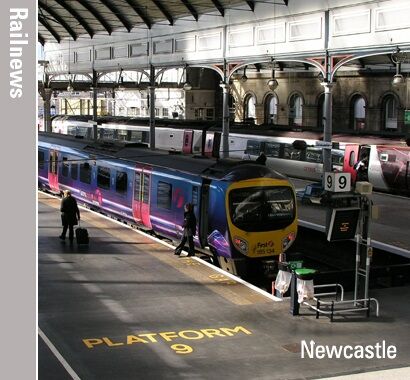A thinktank says its calculations show that the north of England received £140 billion less for transport projects than London between 2009-10 and 2022-23, which would have been enough to build seven Elizabeth Lines.
An analysis of Treasury figures by the Institute for Public Policy Research is based on the equivalent amounts for each person in the population. While transport investment in London was £1,183 for each citizen, in the North East it was just £430, although this figure would not have necessarily included more recent investment in a new fleet of trains for Tyne & Wear Metro and the reopening of the Ashington line.
Yorkshire and Humber was only slightly better off, with £441, and the North West spent £540 a head. The average in the North was £486.
These calculations have been published today in the wake of last week’s Treasury announcement of £15.6 billion for public transport projects in city regions outside London over the next five years, and two days before the Spending Review.
Almost exactly two thirds of the total of £15.6 billion was for city regions in the North, at £10.5 billion. The individual Mayors will decide which projects in their regions should receive investment.
IPPR, IPPR North and Lord Jim O’Neill, who chairs the Northern Powerhouse Partnership and is a former Treasury minister, have published ‘Great Northern Rail’, which is their plan to improve rail services in the North.
Their call follows an earlier announcement by former minister Lord Blunkett, who unveiled his own proposals for railways in Yorkshire on 16 May. These improvements would need a total of £16.4 billion between now and 2040, plus a further £2.5 billion for trams in Leeds, Bradford and Sheffield.
Lord Jim O’Neill said: ‘Good governance requires the guts to take a long-term approach, not just quick fixes. So the Chancellor is right in her focus on the UK’s long-standing supply-side weaknesses – namely our woeful productivity and weak private and public investment.
‘Backing major infrastructure is the right call, and this Spending Review is the right time for the Chancellor to place a big bet on northern growth and begin to close this investment chasm. But it’s going to take more than commitments alone – she'll need to set out a transparent framework for delivery.’
Marcus Johns is senior research fellow at IPPR North. He added: ’Today’s figures are concrete proof that promises made to the North over the last decade were hollow. It was a decade of deceit.
‘We are 124 years on from the end of Queen Victoria’s reign – yet the North is still running on infrastructure built during her reign – while our transport chasm widens.
‘This isn’t London bashing - Londoners absolutely deserve investment. But £1,182 per person for London and £486 for northerners? The numbers don’t lie – this isn’t right. This government have begun to restore fairness with their big bet on transport cash for city leaders. They should continue on this journey to close this investment gap in the Spending Review and decades ahead.’
The Chancellor is due to report the outcome of the 2025 Spending Review in two days from now, and she has already predicted that there will be more spending on railways.
Readers’ comments
It's difficult to see how the transport situation in the North can be noticeably improved without reopening the Woodhead Line. Many studies have extensively laid out the justification for a new Transpennine corridor, the 2014 'One North' report being a particularly landmark publication on this issue. Even Beeching highlighted the line's importance, which makes its inexplicable closure and the government's steadfast refusal to even countenance its reopening all the more suspicious.
Gary Henderson, Buckley, Flintshire
Marcus Johns of IPPR North says ‘The numbers don't lie.’, but in this case they might do, given according to the article the North East's numbers exclude the huge investments in the new metro trains and the reopened line to Ashington. I'm in no doubt that the North (and, let's be honest much of the South and Midlands, to think only of England) gets less investment than the South East, otherwise those ’seven Elizabeth lines’ would be under construction in Birmingham, Bristol, Leeds etc. But to properly illustrate the funding gap, shouldn't we be using figures that are less selective?
James, Farnborough
Do you have a comment? Please click here to send an email to Platform at Railnews.
Moderated comments will be published on this site, and may also be used in the next print edition.


